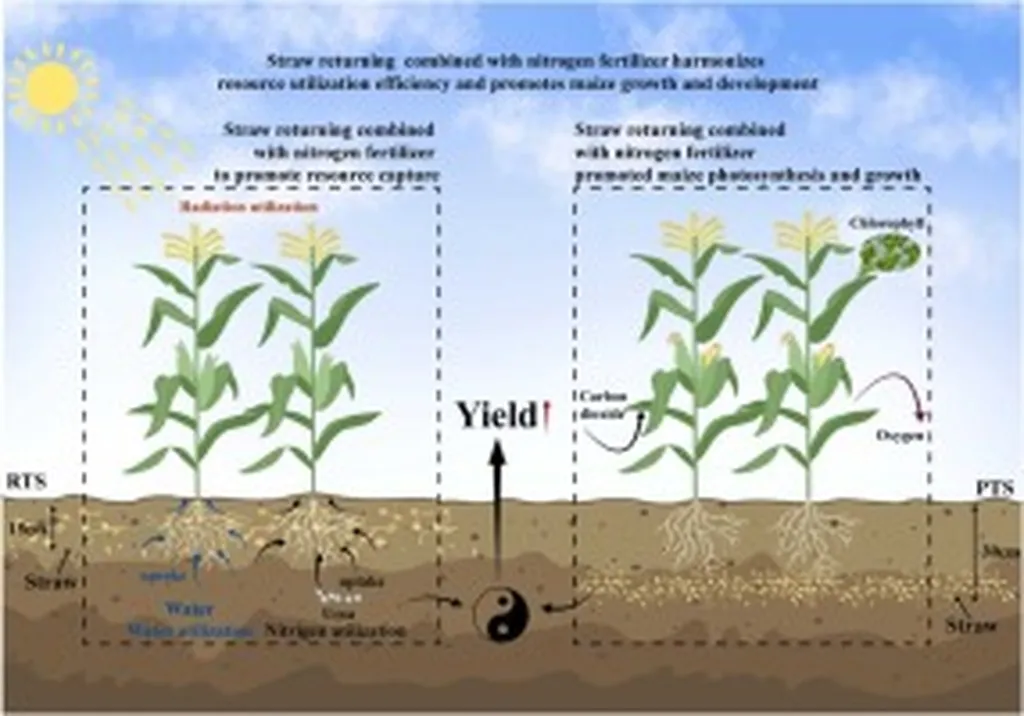In the heart of China’s Tumochuan Plain Irrigation District, a groundbreaking study led by Wenbo Li from the College of Agriculture at Inner Mongolia Agricultural University is reshaping our understanding of sustainable maize production. The research, published in the journal *Frontiers in Plant Science* (translated as “Plant Science Frontiers”), explores how long-term nitrogen management strategies, combined with straw return, can significantly improve soil health, nitrogen use efficiency, and maize yields.
The study, conducted over three years, compared two main plot treatments: deep plowing with straw return (DPR) and no straw return (RT). Subplots included varying nitrogen (N) application rates of 0, 210, 215, and 300 kg per hectare. The results were striking. “Straw return combined with rational nitrogen fertilization plays a critical role in coordinating the transformation of soil organic carbon and nitrogen availability,” Li explained. This synergy not only boosted maize yield by 17.28% but also enhanced nitrogen use efficiency (NUE) and partial factor productivity of nitrogen (PFPN) by 18.24% and 17.88%, respectively.
One of the most compelling findings was the identification of the optimal nitrogen rate under DPR conditions. Using a linear-plus-plateau model, researchers estimated that the optimal N rate was 237.3 kg per hectare, a reduction of 20.89% from the highest application rate tested. This reduction did not compromise performance, offering a practical solution for farmers looking to balance productivity and sustainability.
The study also shed light on the key contributors to NUE and PFPN. Mineral nitrogen (MN), soil quality index (SQI), and dry matter accumulation (DMA) were found to be crucial, with relative contributions ranging from 8.49% to 9.39%. “Straw return enhanced soil nitrogen availability and maize productivity by improving MN and SQI,” Li noted. Even with a 15–20% reduction in nitrogen application, DPR sustained high levels of soil carbon and nitrogen fractions, yield, and NUE.
The implications of this research are far-reaching. For the energy sector, which often relies on nitrogen-based fertilizers, these findings could lead to more efficient and sustainable practices. By optimizing nitrogen management, farmers can reduce input costs and environmental impact while maintaining high yields. This aligns with global trends towards sustainable agriculture and soil fertility enhancement.
As we look to the future, this research offers a roadmap for optimizing nitrogen management under long-term straw return. It provides practical guidance for farmers and policymakers alike, with significant implications for sustainable maize production and soil health. In a world grappling with the challenges of climate change and resource depletion, such innovations are not just welcome but essential.

